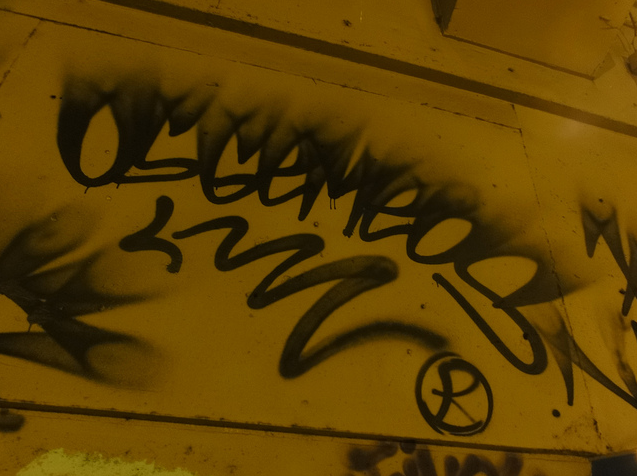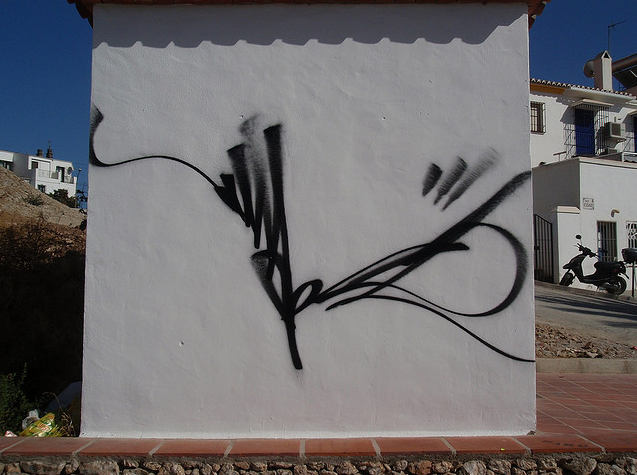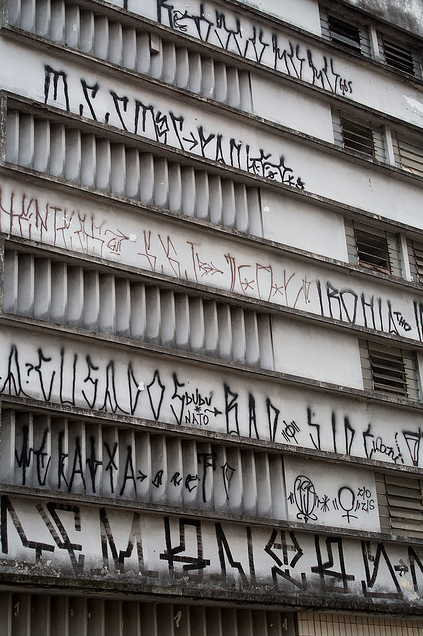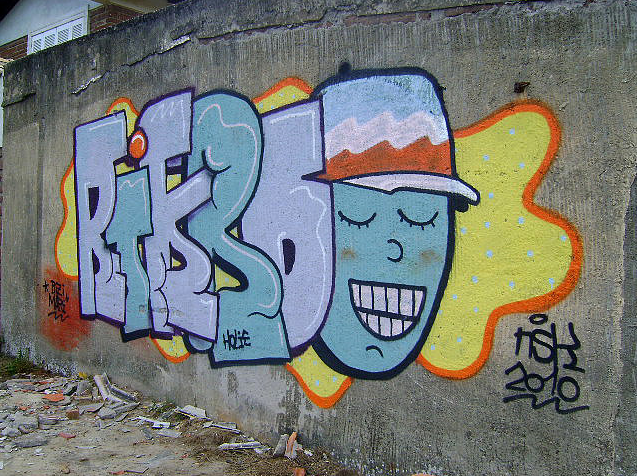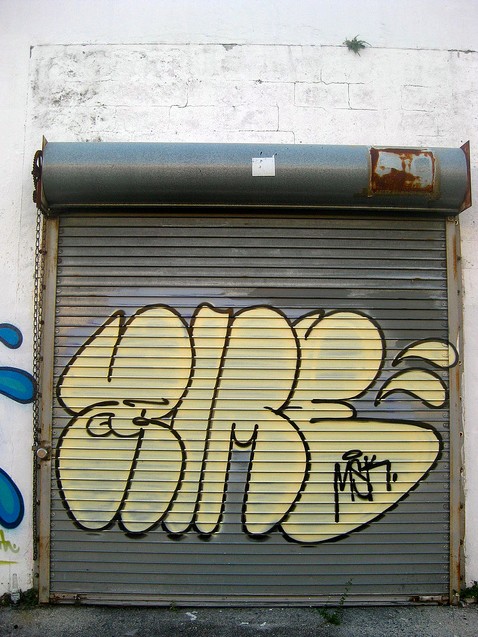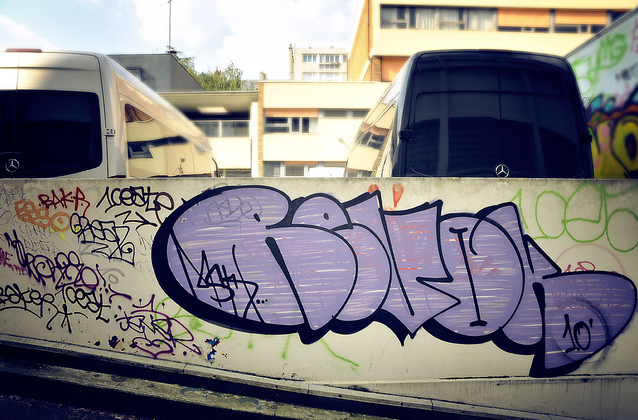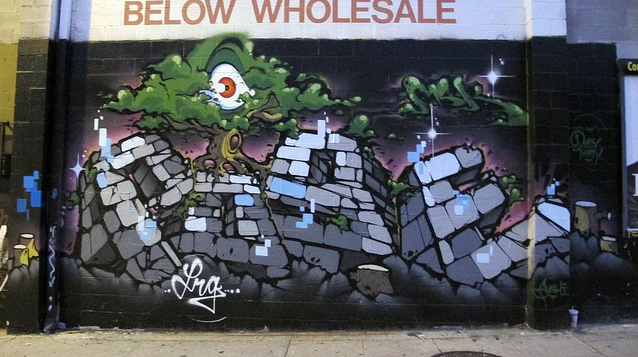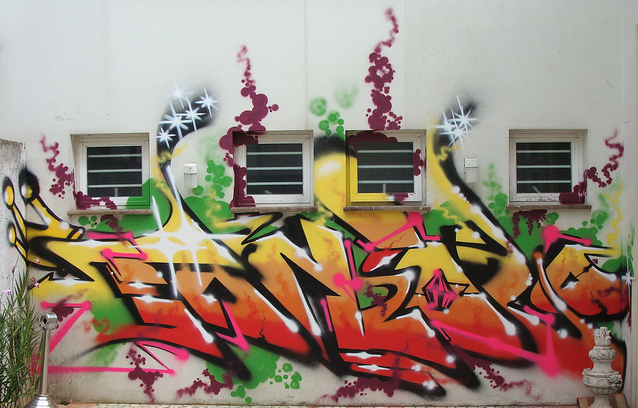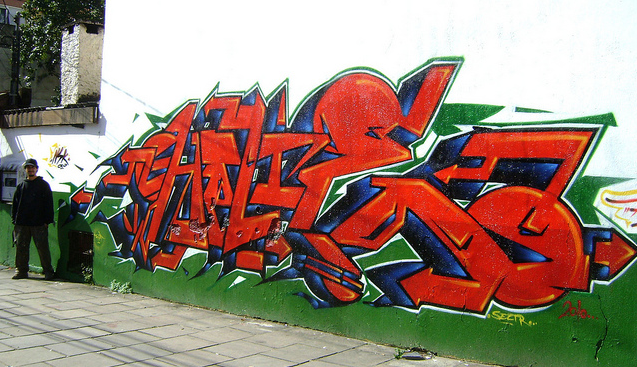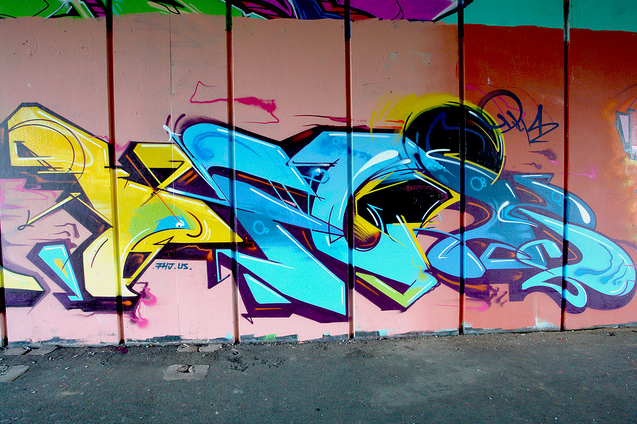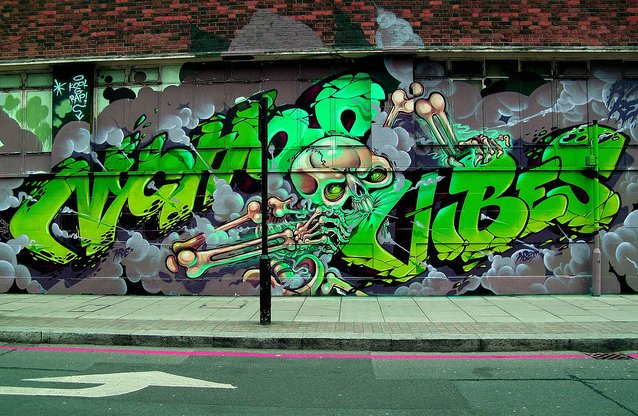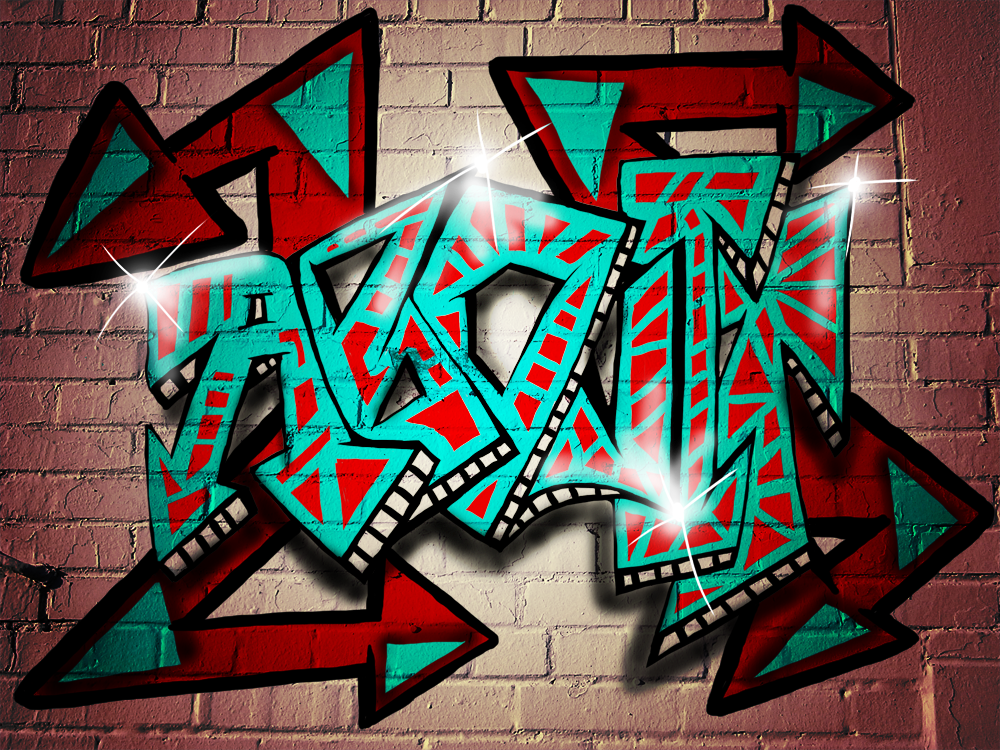Hey buddies! I'm Marcos Torres, a 20 years old art director/freelancer from Brazil, I'm here to bring some new interesting stuff to you. You can see my portfolio at https://flickr.com/marcostorres. Any request or jobs opportunities send to [email protected], also follow me on Twitter https://twitter.com/marcos333 to get in touch with cool design news.
A Brief Introduction into Graffiti Typography

As some of you, I always noticed the graffiti on the streets of my town, and I used to do that since I was a kid. I always wanted to understand what those letters meant. Part of not understanding is due to the fact that I didn't know much about graffiti and its culture, but as soon as I got in touch with some graffiti artists I started to understand how they do their work and why.
So, my goal with this tutorial is not just to showcase and explain a bit of graffiti typography, but to help to break the prejudice that a lot of people, even in the creative area, got with this kind of artwork. I know that, even If you don't like graffiti at all, you will not look at it on the same way after this post.
Before we begin, let me inform that our main goal is to teach new techniques, tips and share our knowledge. We're not sponsoring vandalism or any type of crime, we just want to explain and teach how to do this kind of typography. We deeply trust in our readers, so what you're going to do with this knowledge is really up to you. Do the right thing.
Letters styles on Graffiti
There's many classifications for the letters you see on the street, although most of they may look the same, they're all produce by different techniques and got levels of difficulty. To simplify things, I decided to put them on three categories: Tag, Throw Up and Wildstyle. Before I can show you some tricks on creating them, I gotta teach more about them.
Tag / Pichao
Tag is the most basic form of graffiti, is basically the graffiti artist signature. There's even a classification for the one who just do tags: tagger. A tagger is considered, in most of the cases, a inferior graffiti artist who tag he's street name everywhere, but lacks in drawing skills and/or creativity. Most of the street artists start their career as a tagger, then start developing a style from that. Tags can be done in such a enormous range of styles because they can be done with a large range of tools, from spray cans to markers or even clay. Let me show you some classic and stylish tags:
In Brasil we got a really unique type of tag, we call it "Pichao". Pichaho or Pixo is quite different of the tags developed in north america and europe, mostly because of the media that it was originaly produced: the paint roller. By the time the first graffitis started to appear, spray cans were very expensive in my country and so it was way better to use latex paint mixed with water, in order to last longer and do more tags. The taggers tried to develop an unique typography, influenced by CD and book covers, helped to create what some call the "Pixo Reto", a squared and thin tag, only seem on Brasil. Here are a couple of "Pixo Reto" examples:
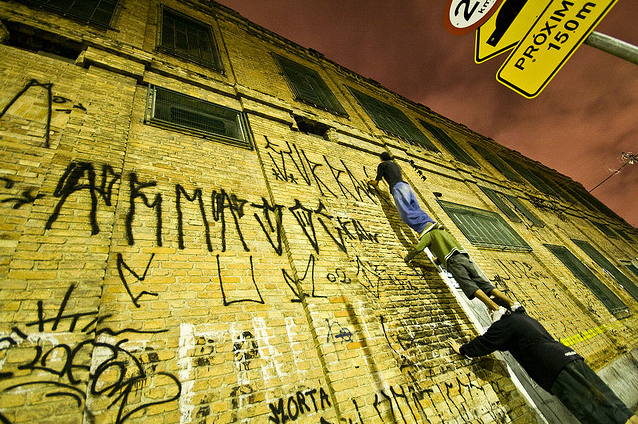
Photo by Frum Latino Americano de Fotografia
Most of the tags / pichao are illegal, except the ones used in legal walls or at exibitions. The interesting thing is to observe the styles of caligraphy that can be developed, Evan Roth even made a study about it, take a look at the video bellow:
Graffiti Taxonomy: Paris, 2009 from Evan Roth on Vimeo.
Throw Up / Bomb / Scrub
Most of you may reconize Throw Up as a bubble letters type, indeed most of the writers who practice this type of letter use round shapes, however there are many variations of it, let's see some.
A throw up is called Scrub when the lines inside the letter body are not complete filled, like it was done on a hurry. In fact, most of the throw ups are illegal, that's part explain why they are not so elaborated as a wildstyle piece. Take a look at the one done by Revok:
So, I hope you understood a bit about throw ups, here's a good gallery with you want to see some samples.
Wildstyle / Burner
In my point of view, the wildstyle pieces are the ones that make Graffiti so memorable, because they are big scale pieces with 2 hours to even a month of work. There's no rules or a pattern when comes to wildstyle, but there's a lot of techniques that are commonly applied when you're learning how to use spray paint. 3D, Shadowning, Glows, Gradients are used by most writers while trying to develop a unique and memorable style. So, let's see some of this pieces:
Here's a good glossary of terms used in the graffiti area, you should read in order to understand some slangs and terms used to describe and categorize pieces.
Tips on creating your own graffiti type
Well guys, I will try to explain to you how to do a simple process of a wildstyle piece. Of course, is really up to you to define what effects and calligraphy you're going to use, there is so many ways to do it, so this will be just a quick introduction. I know most of you probably never touched on a spray can, so what are we going to do is to try to simulate the dinamics of a street situation, using a spray can in Adobe Photoshop. However, you should try do it on real life, that's the only way to understand and learn such aspects as spray hardness, types of cap, gradients and other tricks. But I hope the following exercise can help you on some way.
Sketch
Ok, so the first thing we should do is to know exactly what we will write. Most graffiti artists write their own nick/street name, for this sample I'm going to write just "Abduct". The Sketch is basically a simple structure of the future typography, you should from now on use only the brush tool (the shortcut is the letter "B") on this exercise, no eraser or ctrl + z / command + z, you will understand it soon. Set a color for the background, try using white on, somehow it seems to be easier to create on it. Now, define 4 colors to use, think it as spray cans, on the beginning is way better and cheaper to use just a few colors. Always use the same color of the background, because this will be used as a eraser in real life.

Let's try to draw the letters using a close tracking, use a 10 px brush, If you have a tablet this will be way easier, but If not you sould try it with mouse, it's not that harder. Use the color you want to use for the letter fill to do the sketch, why? Because in a real situation you would save ink by doing it. You should try some more round or really squared shapes, as I'm doing here. Remember: don't use the eraser, If you fell it's not straight or round enough, do it over the other trace, forget about ctrl + z.


Fill
Now let's fill the letter with the color we used for the sketch, don't be afraid, you will remember what part is each letter. Let's add a second color fill inside them


This may look really horrible by this point, but we're going to fix it on the next step. Add a really thin black stroke, just to identify each letter.

Cutting Lines
Cutting lines are probably the most used and basic technique on graffiti, why? This is actually the way to reach sharp and squared shapes, also is by doing this, you're going to make layers over in order to fix some mistakes. Let's see a simple example, I created this square with blue and red inside. I want to create two red triangles, so this is actually what I should do:



Do you get it? You're actually using the brush as a eraser to make shapes straight and hide mistakes. Although this may take a lot of time to master, you gotta try, because the results are solid. So now you're going to adjust the second fill using cutting lines.

Stroke
You may be asking yourselves: "Why should we do the strokes after the fill?" Well, pretty simple, because of the dripping. If you start by doing the stroke, chances are you're going to redo it many time because of the fill that may drip or blur over it. To adjust the stroke, do the same procedure here, cutting lines and patience.

Glows and Lights
Most graffiti artist really enjoy adding some glow and lights to the pieces, it looks really cool indeed. Let me show you just a simple tip: make an "X" with a white color, then use a blurry brush and here it go. This is quite simple, but as you keep evolving you can learn a lot about lightning and shadows.

Final Considerations
I hope you learned a lot today, not just the types of graffiti, but also learned a bit how to do this kind of typography. There're no rules or guidelines when it comes to graffiti, the most important thing it's to try and push things to another level. That's it folks, I will try to make another posts about the subject, explaining other techniques and stuff, work hard and have fun.
Original Link: http://feedproxy.google.com/~r/abduzeedo-tutorials/~3/-jhqKOiLzUI/brief-introduction-graffiti-typography
Abduzeedo
 Abduzeedo is a collection of visual inspiration and useful tutorials
Abduzeedo is a collection of visual inspiration and useful tutorialsMore About this Source Visit Abduzeedo


